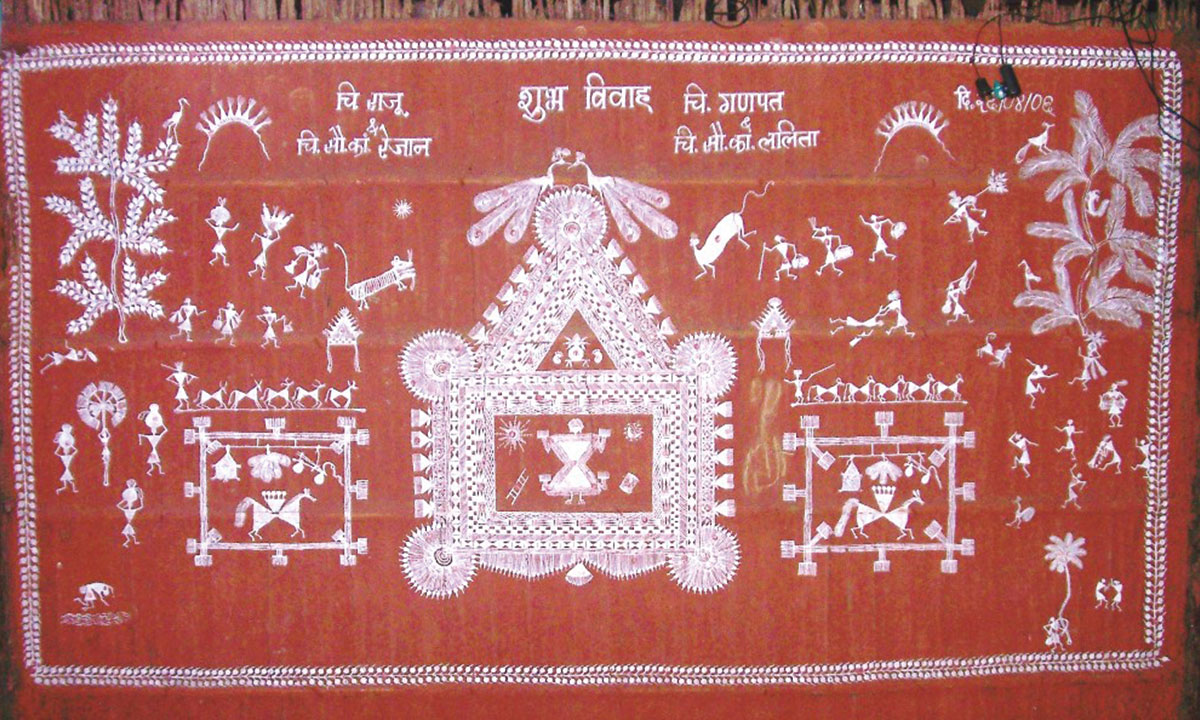What Is Warli Art

Warli Art is one of the traditional folk arts of Maharashtra, India.
The name originates from the Warli Tribe which is the largest tribe found in the northern and coastal areas of the state of Maharashtra.
At a time when the tribes were not acquainted with writing, this was the best way to record and pass on cultural norms to the next generation.
The Warli art form is very simple and is always used to depict daily life and social events of the tribe. There is no depiction of mythology or dieties.
Warli Art is typically depicted in white against a mud brown background. This is indicative of the way the art was originally done by the tribals on their walls. Traditionally a paste made of ground rice and gum was used to draw and paint the patterns with a chewed up bamboo stick used as a brush.
The execution of this art form comes closest to that of pre-historic cave paintings with humans, animals in simple geometric forms of circle, triangles and squares in a loose rhythmic pattern.
The subjects are around hunting, farming, festival and other social customs including dances and marriages.
With the revival of interest in folk art, the first style that is normally experimented with is Warli. The simple forms make it very easy even for small kids to recreate.
Once found only on the mud walls and houses of the Warlis, this art form is now found frequently on pots, vases, bags and even home linens.
Keeping in mind the need to retain the authenticity of cultural and traditional art and to give the tribes and original artisans their due, Warli Painting is one of the folk arts of India that is registered with a Geographical Indication under the Intellectual Property Rights Act.



Leave a Comment